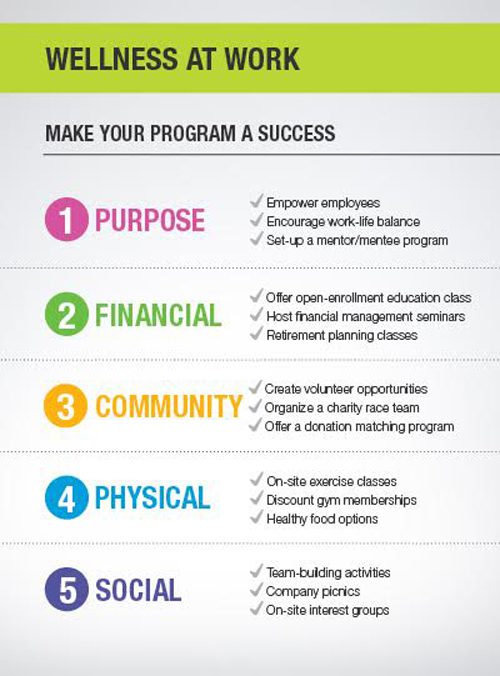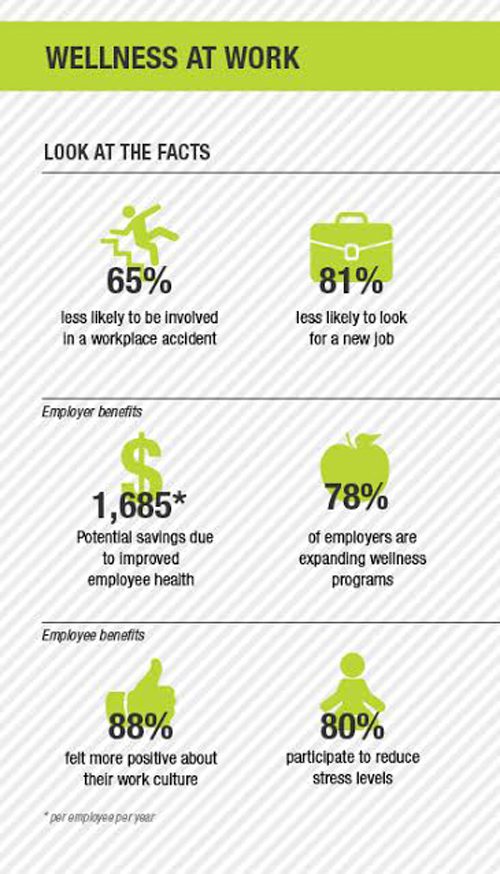
 Workplace wellness is an overall partnership between employee and employer, especially since an individual’s health is such a personal issue. Investment in wellness, with proper communication, can create strong bonds between employers and employees.
Workplace wellness is an overall partnership between employee and employer, especially since an individual’s health is such a personal issue. Investment in wellness, with proper communication, can create strong bonds between employers and employees.
Previously viewed as a courtesy versus a necessity, employers are now recognizing the value in investing in their employees’ health, says Kandi Lannen, director of wellness for Priority Health. Bottom line: When wellness programs are put in place, both employers and employees benefit.
Priority Health recently conducted a five-year study to prove that health plans featuring wellness incentives help lower employer costs and improve employee health. The results showed that employers offering its HealthChoice plan, reduced medical expenses by 12 percent in claims cost, a reduction of up to $60 per month per member. And in addition to saving employers money, participating employees developed chronic conditions at a slower rate compared to those in non-wellness plans.
According to the Society for Human Resource Management, more than two-thirds of U.S. employers currently offer wellness programs. Companies use these wellness programs to fight escalating health care costs associated with chronic diseases, such as diabetes and heart disease. These diseases often lead to higher health care costs for employers, and can lower employee productivity. Through wellness programs, chronic diseases can be managed and monitored to lower costs and improve employee health.
Lannen suggests the following tips to engage workers in wellness programs and help determine which offerings are right for your workplace.
 • Recognize the benefits. Employers find lower health costs to be a major benefit when incorporating wellness programs, but cost isn’t the only plus. Wellness programs have been shown to lead to less absenteeism and higher productivity at work. Onsite wellness education classes and fitness centers help employees with chronic disease management to improve overall health and lower copays and deductibles, too. And it’s important not to discount the positive attitudes associated with a workplace geared toward health and wellness.
• Recognize the benefits. Employers find lower health costs to be a major benefit when incorporating wellness programs, but cost isn’t the only plus. Wellness programs have been shown to lead to less absenteeism and higher productivity at work. Onsite wellness education classes and fitness centers help employees with chronic disease management to improve overall health and lower copays and deductibles, too. And it’s important not to discount the positive attitudes associated with a workplace geared toward health and wellness.
• Communicate what is available. Wellness programs can help employees achieve certain health goals such as losing weight, reducing blood pressure and quitting smoking. Communication with employees is crucial to ensure that wellness programs are engaging and worth participating in. Try creating a website as a one-stop place for employees to learn more about your programs. Employers could also host workshops emphasizing the importance of healthy living and explain what programs the company offers to help employees achieve better health.
• Consider non-traditional wellness alternatives. A study conducted by the International Foundation of Employee Benefits Plans on workplace wellness trends showed that non-traditional benefits are playing a larger role in wellness plans. These offerings include: increased vacation time, community service and engagement, fun entertainment activities, offering holistic services such as on-site yoga or massage and financial counseling.
Implementing strategic wellness programs will go a long way for you and your employees. By increasing the focus of employee wellness and helping individuals achieve personal health goals, you will create healthier and more engaged employees.



